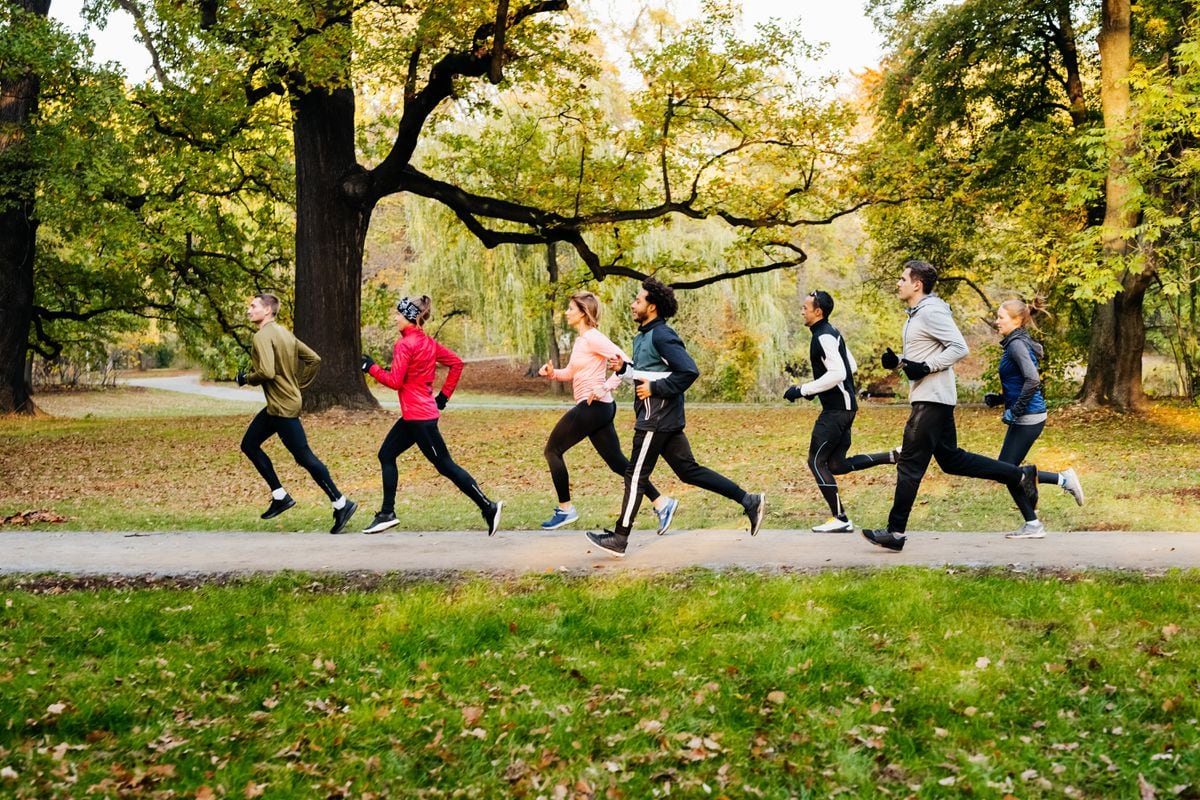Bobby Fischer liked to play tennis before his chess games.
One afternoon in 1971, in Tucumán, Argentina, the best chess player of all time, left the board and the pieces to go to the tennis court with his friends at a club near the city.
Months later, it became known that one of Fischer's demands to contest the world championship against Russian Boris Spassky in 1972 was that there be someone willing to play tennis with him 24 hours a day.
Legend has it that he did not attend the second game of the
game of the century
because he stayed playing with the racket.
His case is not isolated, Gary Kasparov, another of the geniuses of the game, had very good times in the hundred meters of athletics, he played football very well and went to the gym every day in order to prepare his brain for chess.
Many of today's elite players go to high-performance centers to train their bodies before the championships.
Although at first glance there is no obvious relationship between physical exercise and the speed, mental acuity and memory that chess requires, many recent scientific studies have shown that, to achieve greater oxygenation of the brain and stimulate proper neural connections, physical preparation is necessary.
A new CSIC book, entitled
Brain and exercise
and written by Coral Sanfeliu and José Luis Trejo, explores the benefits of frequent and controlled physical activity on the behavior of the brain of human beings.
"Exercise brings your brain to the best of its abilities," says Sanfeliu, director of the Neurodegeneration and Aging Group at the Barcelona Institute for Biomedical Research.
The publication scientifically demonstrates how exercise improves children's math learning, stimulates the generation of new neurons, fights depression and anxiety, helps prevent Alzheimer's and increases life expectancy.
Better intellectual performance of children
Gymnastics hours in schools should not be reduced to increase science or math hours.
On the contrary: we must increase the school days of physical education and promote training and competitions in football, basketball, athletics and other sports so that children have a better academic performance.
That is one of the conclusions of the book
Brain and exercise.
Coral Sanfeliu recognizes that exercise does not make children smarter, but it does increase their cognitive capacity and push them to the limit of their abilities, especially in logical-mathematical analysis.
"On academic results, there are conclusive studies that associate sport with a better grade in mathematics and arithmetic," the study reads.
"Sports-induced changes in brain plasticity at an early age can be sustained and generate long-term cognitive benefits," says Sanfeliu.
And he adds: "A greater speed of information processing has been described at advanced ages in those who practiced sports during adolescence."
The researchers write that the brain's hippocampus and prefrontal cortex, where memory functions and cognitive control reside, respectively, are highly sensitive to the benefits of sustained physical activity during childhood and youth.
There is also conclusive evidence, says Sanfeliu, of the advantages of sport in the control and decision-making functions of the brain.
New neurons that could repair brain injuries
Physical activity increases the formation of new neurons.
This process, called neurogenesis by science, occurs through compounds in the blood that enter the brain and increase as the individual exercises.
In experiments in mice, it was found that exercise doubles or sometimes triples the creation of new neurons.
Sanfeliu explains that although the neurons that can be produced with sports are a small percentage, close to 4% or 6%, they could be "really important" for the health of the human brain.
Research is underway trying to prove that these new neurons can occupy areas of the brain where there are injuries and help heal them.
According to scientists, information processing is intrinsically linked to movement and that is why a sedentary lifestyle requires much fewer neurons than sports.
The authors of the book write: "Our brain has developed the ability to signal physical activity so that the number of neurons increases to process new information from new places, and to memorize new data."
This process "definitely" demonstrates that the brain of the subject who exercises functions differently from that of the sedentary subject.
"The overall result of physical activity is a net increase in the brain's ability to process highly variable amounts of information."
An antidote to depression and anxiety
The researchers concluded that chronic physical activity, performed on a regular and long-term basis, has antidepressant and anxiolytic effects.
“When endogenous opioid levels increase, they generate pleasant effects on the internal perception of the subject.
The practice of exercise increases those levels, ”the publication reads.
The scientist affirms that exercise improves the balance of the most popular neurotransmitters: dopamine, responsible for movement, and serotonin, responsible for controlling emotions.
"Sport manages to regulate and normalize the levels of these neurotransmitters, avoid excesses and absences of one and the other, and this is reflected in the state of mind", says the scientist.
and continues: "It is proven in humans that exercise improves mental health."
From a study of one million American adults, it was established that 45 minutes of aerobic exercise 3-5 days per week were needed to obtain the maximum benefits and improve mood, self-esteem and psychological balance.
The experiment also reveals that team sports are more effective than intense individual exercise.
The book concludes that moderate physical activity facilitates restful sleep and reduces stress.
Lower risk of Alzheimer's
"Over the years we lose a bit of gray matter and white matter," explains Coral, "With the decrease in gray our neurons shrink, with the absence of white the connections between them deteriorate."
For that reason, healthy aging causes human beings to make slower decisions, take time to find the right words, and even confuse dates or names.
Daily exercise helps improve these symptoms.
According to the researcher, the worst thing for older people is to leave them sitting on a chair in a residence, "you have to invite them to move," she insists.
The research includes several studies that show that doing regular physical activity reduces the risk of Alzheimer's after the age of 60, regardless of the genetic predisposition of each individual.
One of the studies monitored the physical activity of more than 700 80-year-old men and women for 48 months and revealed that the incidence of Alzheimer's cases decreased as physical activity increased.
Another study, conducted in 2,000 volunteers aged 71 to 93, found that men who walked at least three kilometers a day had a lower risk of suffering from the disease compared to those who walked less than a kilometer.
Once the disease appears, physical exercise could induce a slight cognitive improvement in the initial stage.
The book reads: "A meta-analysis of 18 studies with Alzheimer's patients concluded a positive effect of exercise interventions on cognition and activities of daily living."
Longer life expectancy
"Individuals who perform regular physical exercise, in addition to staying physically and mentally younger than those who do little physical activity, have a longer life expectancy," the book reads.
Various population studies have shown that sport or domestic physical activity reduces mortality from all causes in adults aged 50 to 70 years.
It is also proven that a sedentary lifestyle increases the risk of age-related diseases such as type 2 diabetes, stroke and some cancers.
“Long hours sitting in front of the television, in the car or in the office are a cause of premature death.
Eight hours of sedentary lifestyle a day can be compensated by moderate physical activity ”, says the research.
A very frequent clinical test to prevent life expectancy in the elderly is the analysis of speed when walking a distance of four meters.
"A result of 1.0 meters per second is equivalent to a healthier state of aging and with more life expectancy than the average, which would be in people who walk at 0.8 meters per second", says the study and concludes: " Walking below 0.6 meters per second indicates health problems, frailty and risk of premature death ”.
You can follow
MATERIA
on
,
,
or subscribe here to our
newsletter





/cloudfront-eu-central-1.images.arcpublishing.com/prisa/YXV2XXPRIRGLBCZD37DUIOI5MY.jpg)

